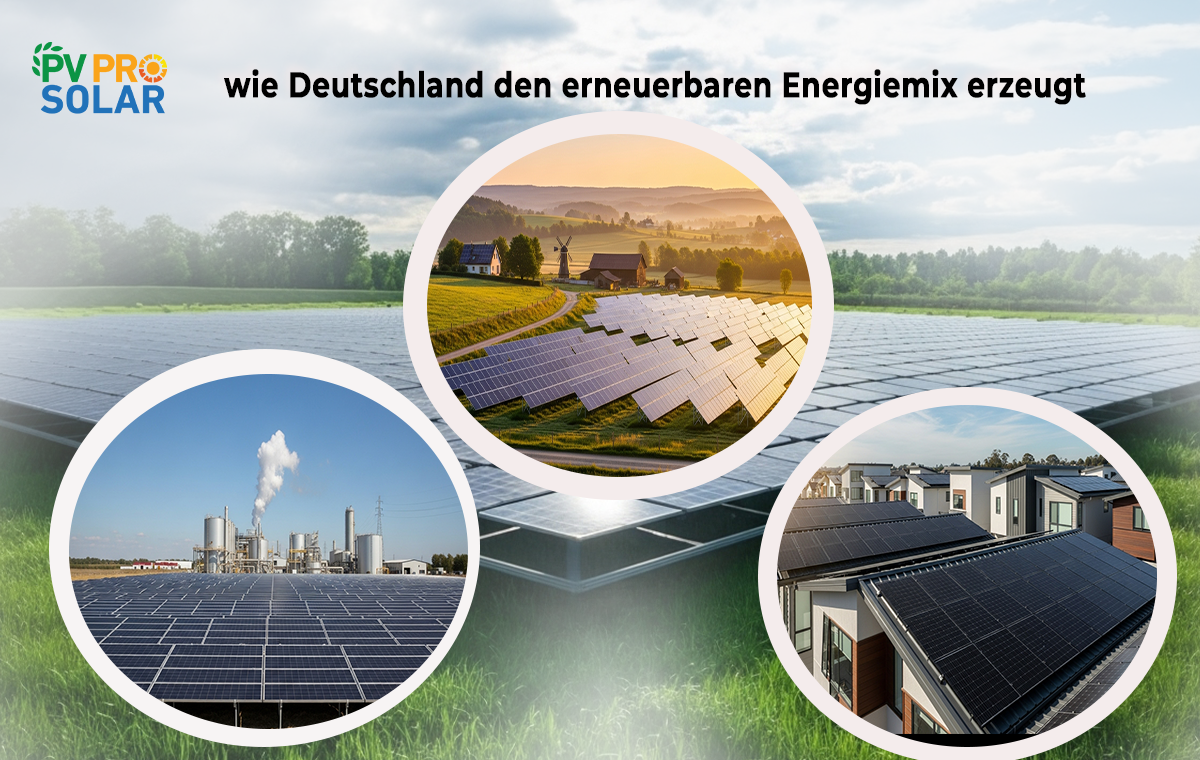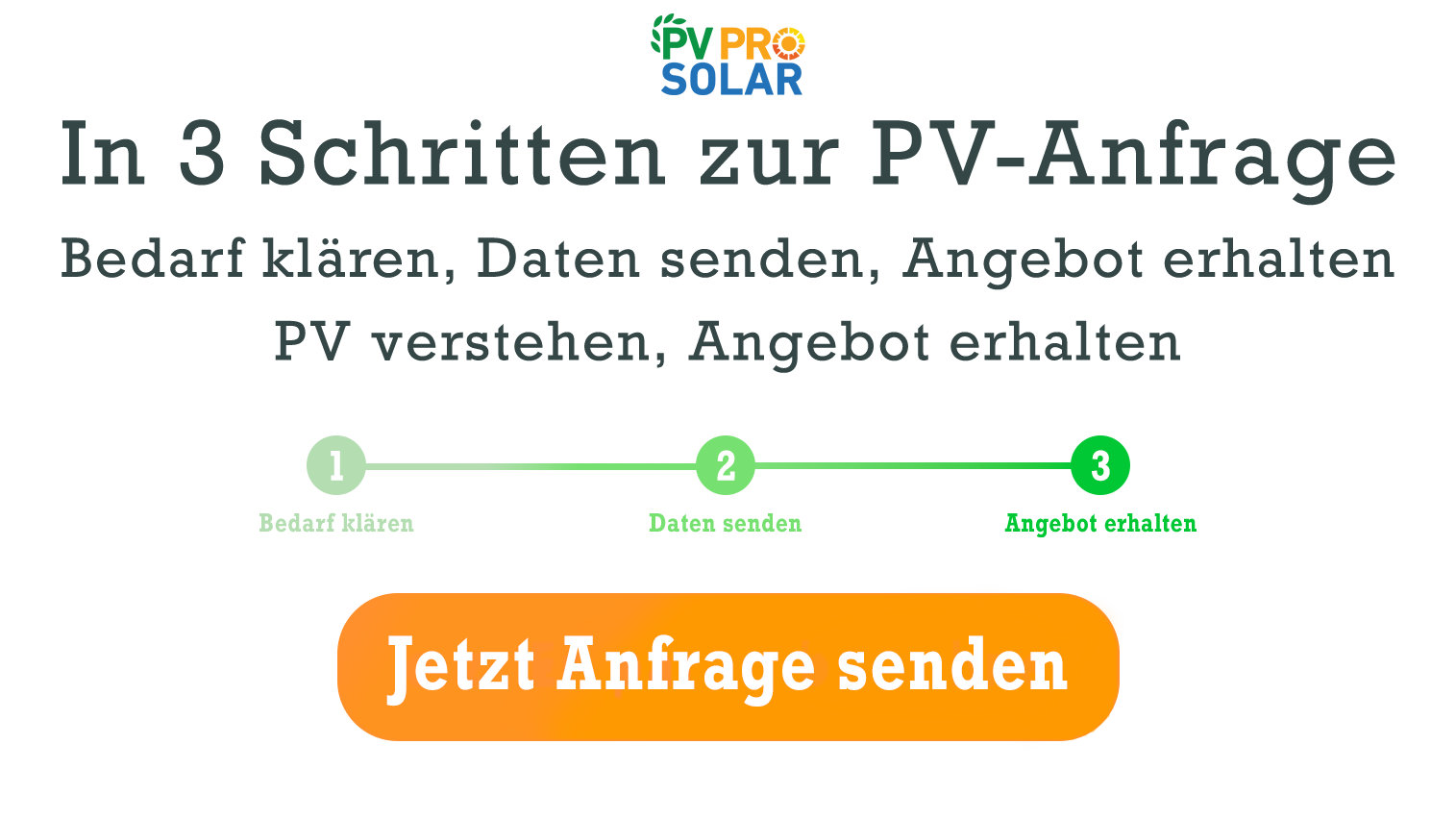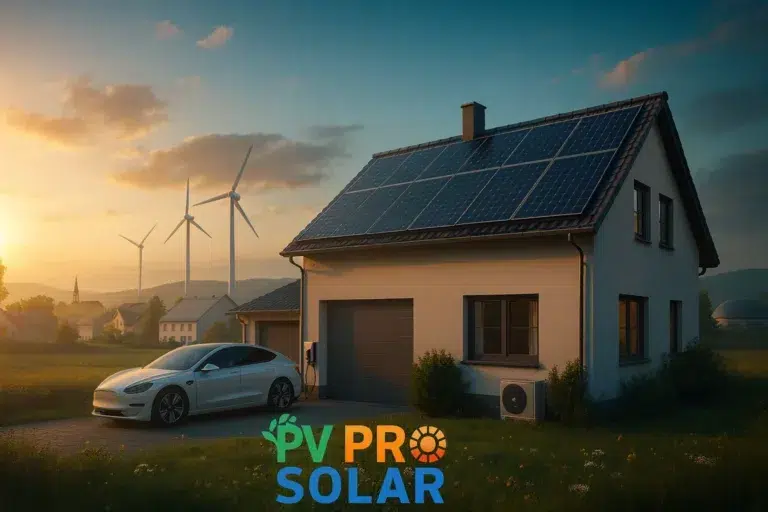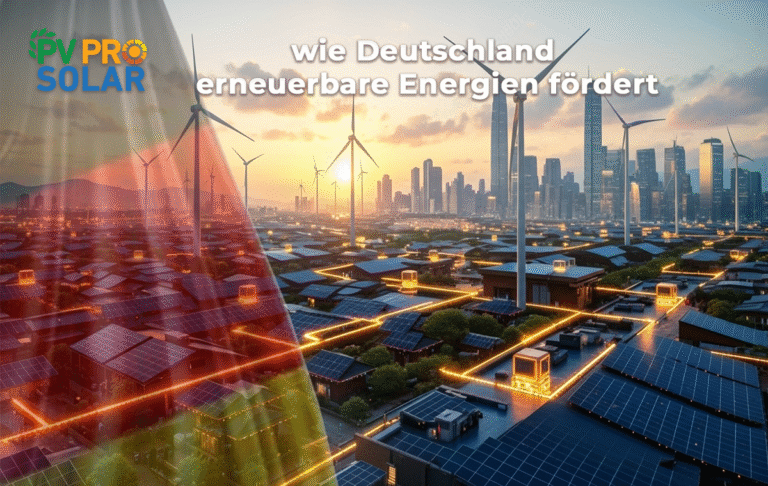How Does Germany Generate Its Renewable Energy Mix?
Germany is now one of the global leaders in the expansion of renewable energy. But the way Germany generates its renewable energy mix is no accident—it’s the result of years of planning, investment, and cutting-edge technology.
This article provides an easy-to-understand overview of how German electricity is becoming increasingly sustainable.
What Does “Renewable Energy Mix” Mean?
The term refers to the combination of different renewable energy sources used to produce electricity. In Germany, the main sources are:
- Wind power
- Solar energy (photovoltaics)
- Biomass
- Hydropower
Together, these make up the majority of the country’s electricity generation. Fossil fuels like coal and gas are being used less and less due to their negative impact on the climate and their decreasing role in a modern energy system.
Current Figures: How Much Electricity Comes From Renewables?
According to Germany’s Federal Statistical Office (Destatis), around 59% of electricity produced in 2024 came from renewable sources. That means the majority of German power is now green.
In total, more than 250 billion kilowatt-hours of renewable electricity were fed into the national grid in 2024—a remarkable achievement that highlights the strength of Germany’s energy transition (Energiewende).
In fact, during the second quarter of 2024, more electricity was generated from wind and solar than from fossil sources. This marks a clear shift in how electricity is being produced across the country.
Which Energy Sources Make Up the Largest Share?
To understand how Germany generates its renewable energy mix, let’s take a closer look at the key sources:
Wind Energy
Wind power accounts for the largest share of renewable electricity. Particularly in northern Germany, numerous onshore and offshore wind farms generate billions of kilowatt-hours annually, playing a crucial role in supplying the public power grid.
Solar Energy
An increasing number of rooftops and open spaces are equipped with solar panels. Photovoltaics convert sunlight directly into electricity and now contribute a double-digit percentage share to the national energy supply. Solar power continues to grow and is a key driver of the Energiewende.
Biomass
Energy is also generated from plant waste, wood, and organic waste. Biomass plays a vital role because it can produce electricity even when the sun isn’t shining and the wind isn’t blowing—helping to stabilize the grid.
Hydropower
Hydropower plants use the energy of flowing water. While their share is relatively small, they provide a steady and reliable contribution to renewable electricity generation.
By combining these four sources, Germany has built a stable and diversified energy mix that is transforming its electricity market for the long term.
How Do Renewable Sources Work Together?
To ensure a reliable power supply, the different energy sources must complement one another:
- Wind turbines generate a lot of electricity when it’s windy.
- Solar panels step in during sunny periods.
- Biomass and hydropower help balance the grid during calm, cloudy days.
This flexible interaction is key to how Germany generates its renewable energy mix—ensuring power is delivered consistently, safely, and sustainably, no matter the weather.
Challenges on the Path to 100% Renewable
Transforming the electricity system is a massive undertaking. Germany still faces several major challenges:
- Storage – Wind and solar power aren’t always generated when demand is high. Large-scale batteries and hydrogen storage are crucial for saving excess energy.
- Grid Expansion – Power needs to be transmitted from wind-rich northern regions to the south. This requires new transmission infrastructure.
- Weather Dependence – Systems must stay flexible to manage lulls in wind and solar output.
- Land & Permits – More land and faster approval processes are needed for building new wind and solar installations.
Despite these hurdles, the share of renewables continues to grow—driven by innovation, investment, and strong public policy support.
The Development of Renewable Energy in Germany
Germany’s renewable energy progress clearly shows how the country is building and improving its renewable energy mix:
- 2000: Around 6% of electricity came from renewables.
- 2010: Approximately 17%.
- 2020: Over 50%.
- 2024: Nearly 60% of electricity was generated from renewable sources.
In early 2025, the share dipped slightly due to low wind levels. Nevertheless, the overall trend is unmistakable: Germany remains firmly on track toward a fully renewable energy future.
Renewables vs. Fossil Energy: A Clear Shift
In the past, most electricity came from coal and natural gas. Today, the majority of power is produced from renewable sources. Fossil fuels are used only as backups—such as during prolonged periods with little wind or sun.
The goal is clear: to phase out fossil energy, reduce CO₂ emissions, and fully implement the energy transition.
Looking Ahead: How Germany Plans to Go Even Greener?
In the coming years, Germany aims to:
- Expand wind and solar capacity further
- Promote energy storage and hydrogen technologies
- Continue building the grid and fostering public support through transparent planning
These efforts will result in a clean, stable, and independent energy system. That’s the essence of how Germany generates its renewable energy mix—step by step, into a sustainable future.
Germany is proving that real change is possible. Most of its electricity now comes from renewables. With modern technology, smart planning, and public investment, the goal of a fully green energy future is within reach.
Want to Learn More?
Explore solar technology and sustainable power solutions with PVPro Solar GmbH – your partner for clean energy in Germany.
As of 2024, approximately 59% of the electricity generated in Germany comes from renewable sources, according to Destatis. This marks a major milestone in the energy transition.
Wind energy has the largest share, followed by solar, biomass, and hydropower. Together, they generate billions of kilowatt-hours annually. What percentage of electricity in Germany comes from renewable sources?
Which source contributes the most to Germany’s renewable energy mix?








